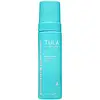What's inside
What's inside
 Key Ingredients
Key Ingredients

 Benefits
Benefits

 Concerns
Concerns

 Ingredients Side-by-side
Ingredients Side-by-side

Salicylic Acid 2%
MaskingWater
Skin ConditioningSodium Methyl 2-Sulfolaurate
CleansingDisodium 2-Sulfolaurate
CleansingDisodium Laureth Sulfosuccinate
CleansingLactococcus Ferment Lysate
Skin ConditioningMelaleuca Alternifolia Leaf Oil
AntioxidantAzelaic Acid
BufferingMorinda Citrifolia Extract
AstringentGlycyrrhiza Glabra Root Extract
BleachingVaccinium Angustifolium Fruit Extract
Skin ProtectingZingiber Officinale Root Extract
MaskingLactic Acid
BufferingHydrolyzed Algin
Glycerin
HumectantCitric Acid
BufferingPhospholipids
Skin ConditioningCaprylyl Glycol
EmollientSodium Chloride
MaskingBenzoic Acid
MaskingSodium Hydroxide
BufferingSodium Glycolate
BufferingTrisodium Dicarboxymethyl Alaninate
Butylene Glycol
HumectantChlorphenesin
AntimicrobialSodium Benzoate
MaskingEthylhexylglycerin
Skin ConditioningPhenoxyethanol
PreservativeSalicylic Acid 2%, Water, Sodium Methyl 2-Sulfolaurate, Disodium 2-Sulfolaurate, Disodium Laureth Sulfosuccinate, Lactococcus Ferment Lysate, Melaleuca Alternifolia Leaf Oil, Azelaic Acid, Morinda Citrifolia Extract, Glycyrrhiza Glabra Root Extract, Vaccinium Angustifolium Fruit Extract, Zingiber Officinale Root Extract, Lactic Acid, Hydrolyzed Algin, Glycerin, Citric Acid, Phospholipids, Caprylyl Glycol, Sodium Chloride, Benzoic Acid, Sodium Hydroxide, Sodium Glycolate, Trisodium Dicarboxymethyl Alaninate, Butylene Glycol, Chlorphenesin, Sodium Benzoate, Ethylhexylglycerin, Phenoxyethanol
 Reviews
Reviews

Ingredients Explained
These ingredients are found in both products.
Ingredients higher up in an ingredient list are typically present in a larger amount.
We don't have a description for Disodium 2-Sulfolaurate yet.
Ethylhexylglycerin (we can't pronounce this either) is commonly used as a preservative and skin softener. It is derived from glyceryl.
You might see Ethylhexylglycerin often paired with other preservatives such as phenoxyethanol. Ethylhexylglycerin has been found to increase the effectiveness of these other preservatives.
Glycerin is already naturally found in your skin. It helps moisturize and protect your skin.
A study from 2016 found glycerin to be more effective as a humectant than AHAs and hyaluronic acid.
As a humectant, it helps the skin stay hydrated by pulling moisture to your skin. The low molecular weight of glycerin allows it to pull moisture into the deeper layers of your skin.
Hydrated skin improves your skin barrier; Your skin barrier helps protect against irritants and bacteria.
Glycerin has also been found to have antimicrobial and antiviral properties. Due to these properties, glycerin is often used in wound and burn treatments.
In cosmetics, glycerin is usually derived from plants such as soybean or palm. However, it can also be sourced from animals, such as tallow or animal fat.
This ingredient is organic, colorless, odorless, and non-toxic.
Glycerin is the name for this ingredient in American English. British English uses Glycerol/Glycerine.
Learn more about GlycerinGlycyrrhiza Glabra Root Extract is an extract of the roots of Licorice. It has been found to have several benefits such as skin hydrating, conditioning, and soothing.
One component, glabridin, has extra potent antioxidant and soothing properties. It has also been found to block pigmentation from UVB rays in guinea pigs.
Licorice Root also contains a flavonoid. Flavonoids are a natural substance from in plants. Flavonoids also have antioxidant properties.
Another component, glycyrrhizin, has been found to have anti-inflammatory and antimicrobial benefits. This may make licorice root extract effective at treating acne. However, more research is needed to support this.
Liquiritin is one of the flavone compounds found in licorice. It has been found to help lighten skin by preventing tyrosinase from reacting with tyrosine. When the two react, protein is converted to melanin. Melanin is the substance in your body that gives your features pigmentation.
Learn more about Glycyrrhiza Glabra Root ExtractPhenoxyethanol is a preservative that has germicide, antimicrobial, and aromatic properties. Studies show that phenoxyethanol can prevent microbial growth. By itself, it has a scent that is similar to that of a rose.
It's often used in formulations along with Caprylyl Glycol to preserve the shelf life of products.
Salicylic Acid (also known as beta hydroxy acid or BHA) is a well-known ingredient for treating skin that struggles with acne and clogged pores. It exfoliates both the skin's surface and deep within the pores to help clear out buildup, control oil, and reduce inflammation.
Unlike AHAs (alpha hydroxy acids), salicylic acid is oil-soluble. This allows it to penetrate into pores which makes it especially effective for treating blackheads and preventing future breakouts.
Salicylic acid is also known for its soothing properties. It has a similar structure to aspirin and can calm inflamed or irritated skin, making it a good option for acne-prone skin that is also sensitive.
Concentrations of 0.5-2% are recognized by the U.S. FDA as an over-the-counter topical acne product.
It can cause irritation and/or dryness if one's skin already has a compromised moisture barrier, so it's best to focus on repairing that before introducing this ingredient into your routine.
While salicylic acid does not increase sun sensitivity, it’s still important to wear sunscreen daily to protect your skin.
If you are looking for the ingredient called BHA or Butylated Hydroxyanisole, click here.
Learn more about Salicylic AcidWater. It's the most common cosmetic ingredient of all. You'll usually see it at the top of ingredient lists, meaning that it makes up the largest part of the product.
So why is it so popular? Water most often acts as a solvent - this means that it helps dissolve other ingredients into the formulation.
You'll also recognize water as that liquid we all need to stay alive. If you see this, drink a glass of water. Stay hydrated!
Learn more about Water